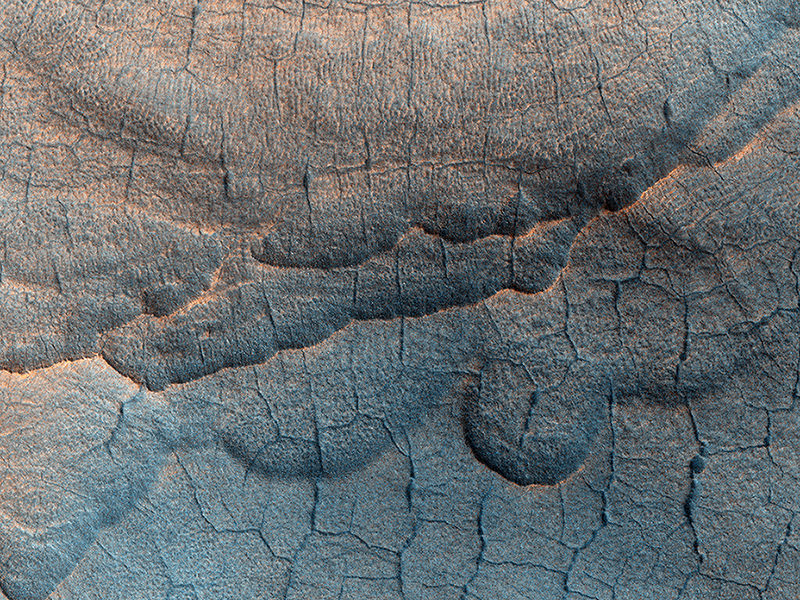The name of this large impact basin on Mars, Utopia Planitia, sounds idyllic. But it also strikes a warm place in the heart of any Trekkie, as in the future (at least in the Star Trek Universe) it will be the location of the facility where the original Starship Enterprise and its many incarnations will be built. While the majority of the Utopia Planitia Shipyards are in geosynchronous orbit of Mars, there are also facilities on the planet as well, according to the Utopia Planitia Yards Starship Guide website. Uptopia Planitia was “found to be the ideal location [for the Shipyard], and a number of planetary sites are developed along with an expansive orbital facility located in geosynchronous orbit directly above,” explains the site.
But back to the present and this beautiful image from the HiRISE camera on board the Mars Reconnaissance Orbiter.
What is striking about the image are the polygon-shaped patterns of troughs and large scallop-shaped depressions. Mike Mellon, writing on the HiRISE website explains that collectively, such landforms are referred to as “thermokarst,” which both point to a slightly warmer and wetter Mars in the past.
Writes Mellon:
Under the proper climate conditions ice may form and seasonally accumulate in a honeycomb network of vertical fractures that appear when ice-rich soil contracts each winter. On Earth this form of subsurface ice is called an “ice wedge.” Special conditions are needed for this ice to accumulate and develop into a large wedge, namely warm temperature and abundant surface water. A thick layer of thawed wet soil forms allowing water to percolate into the open contraction cracks within the permafrost beneath. Later, loss of this wedge ice, by for example sublimation, results in deep depressions marking the honeycomb network.
Likewise, the larger scallop depressions might point to a past climate of frozen ponds or local patches of windblown snow collected in hollows. These surface ice deposits could later be covered by the ever-shifting soils and dust. In either case, the currently bitter cold and dry climate of Mars is not conducive to forming either of these buried-ice forms. Therefore, these landforms point to a warmer, but still cold, climate in the geologic past.
This image just highlights why I’m such a big fan of the HiRISE camera: a gorgeous image of our neighboring planet that was taken just last month from a spaceship orbiting Mars RIGHT NOW that tells us more about the past, while giving hope for our potentially space-faring future.

